How to Grow Clematis
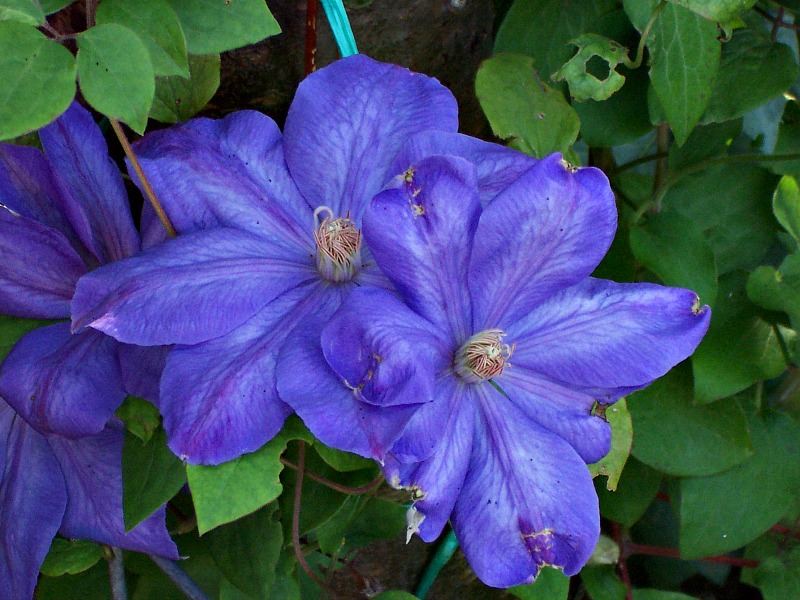 Clematis has a rich history traced as far back as the 17th century when they were first introduced from China to Japanese Gardens.
Clematis has a rich history traced as far back as the 17th century when they were first introduced from China to Japanese Gardens.
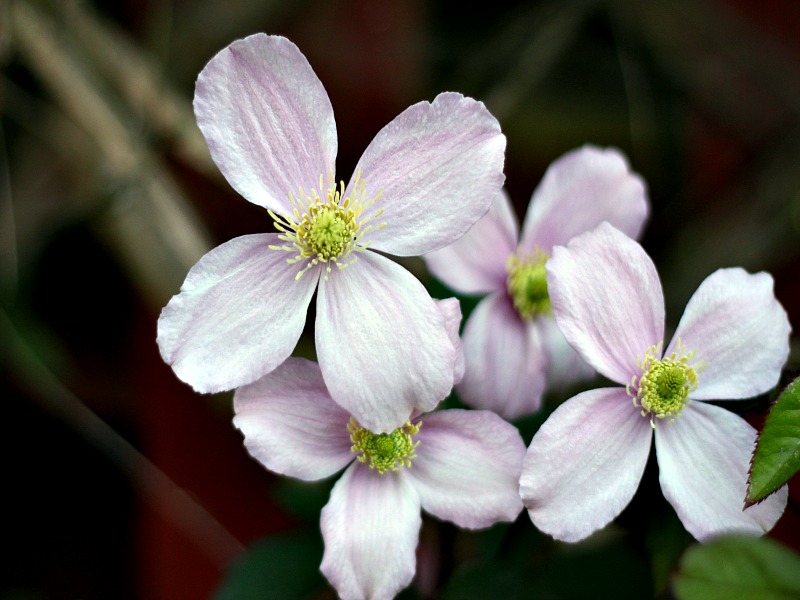 In time, selected clematis varieties journeyed to European gardens in the 18th century. They have long been prized for their showy flower displays and are wonderful climbers for trellises, arbors, and companion plants.
In time, selected clematis varieties journeyed to European gardens in the 18th century. They have long been prized for their showy flower displays and are wonderful climbers for trellises, arbors, and companion plants.
There are varieties that naturally work well for groundcovers, carpeting banks, or growing up trees.
Picking a Variety of Clematis
Clematis plants can generally be grouped into two different types; deciduous, those that drop their leaves in fall/winter or evergreen that keep most of their greenery all year long.
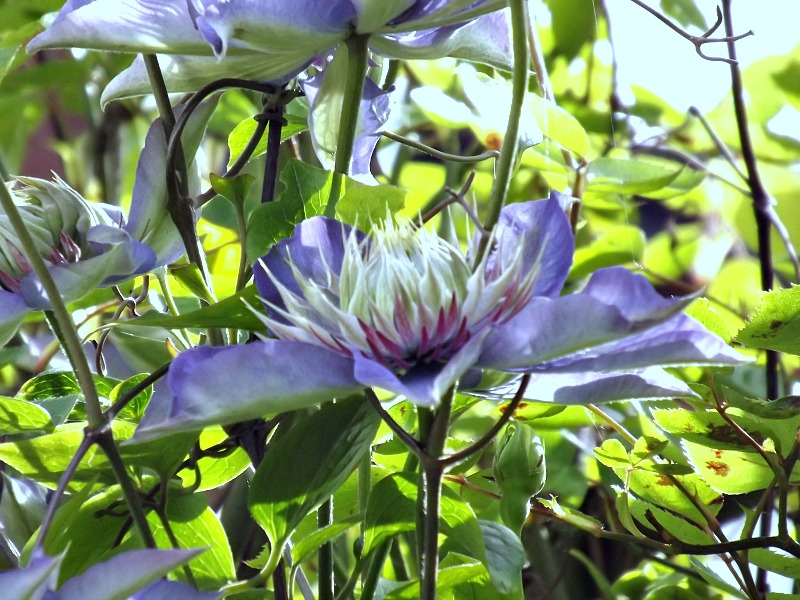 In dreary areas of the landscape, evergreen adds an interesting feature come winter.
In dreary areas of the landscape, evergreen adds an interesting feature come winter.
Deciduous types lend themselves to being paired with great fall colored trees/bark. When selecting varieties eventual size and flower color should be kept in mind.
Choosing the Right Location
Most clematis prefer full sun, however their stems near the ground like some shade.  Consider planting some shorter plantings near the base to protect the stems from sun scorch in the summer time. Clematis can flower throughout the spring or summer depending on the one selected.
Consider planting some shorter plantings near the base to protect the stems from sun scorch in the summer time. Clematis can flower throughout the spring or summer depending on the one selected.
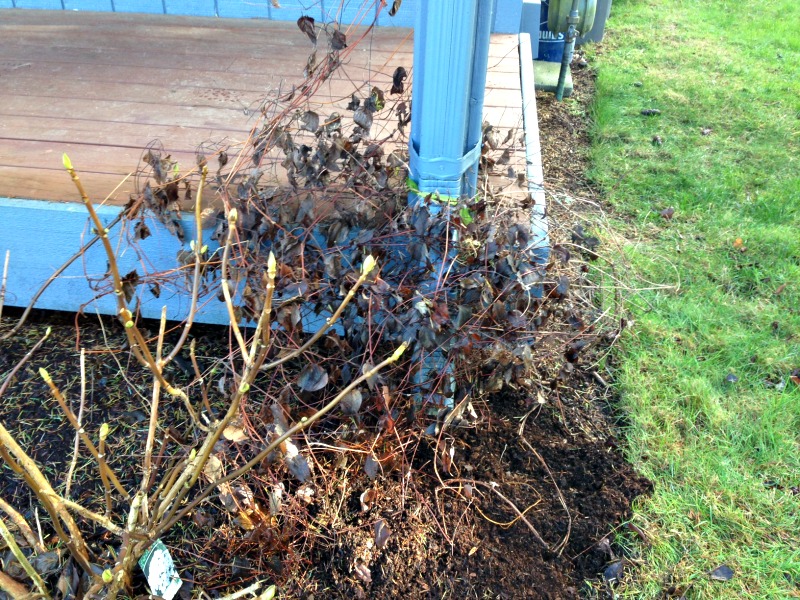 Garden areas needing color at specific times of the year can benefit from the flower timing chosen. Clematis do best in well drained rich soils and can tolerate a decent range of soil pH.
Garden areas needing color at specific times of the year can benefit from the flower timing chosen. Clematis do best in well drained rich soils and can tolerate a decent range of soil pH.
Planting and Soil Preparation
When planting dig a hole as deep and twice as wide as the pot the plant is in. Additional organic matter can be dug into the soil at this time.
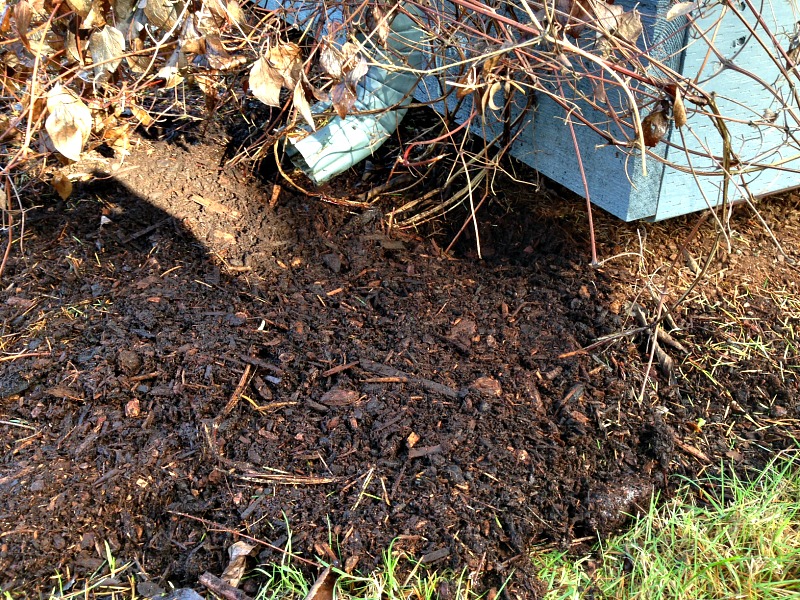 Firm the soil around the clematis and make sure to plant at the same height as in the pot. Use a few fingers to brush extra soil away from the stems.
Firm the soil around the clematis and make sure to plant at the same height as in the pot. Use a few fingers to brush extra soil away from the stems.
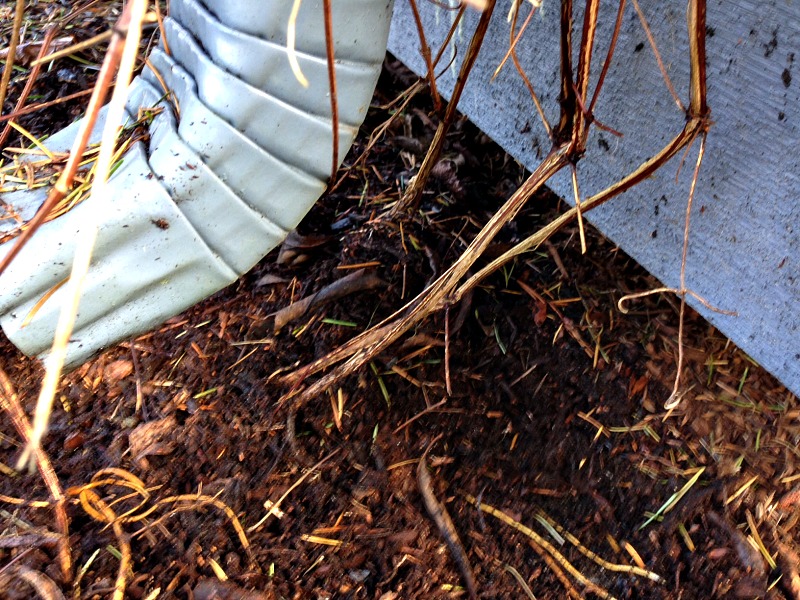 A 2-3 inch layer of coarse mulch such as bark or wood chips can surround the new plant a few inches away from the center of the plant. Organic nutrients can be supplied once or twice a year for healthy measure.
A 2-3 inch layer of coarse mulch such as bark or wood chips can surround the new plant a few inches away from the center of the plant. Organic nutrients can be supplied once or twice a year for healthy measure.
Climbing Support
Clematis can create an attractive low growing sprawl but for upright appeal a strong trellis, arbor, or living structure such as tree trunk need to be nearby.
 Clematis vines will naturally wrap their adapted leaves around structures and climb as they go. They can be assisted to wrap around objects as well for desired results.
Clematis vines will naturally wrap their adapted leaves around structures and climb as they go. They can be assisted to wrap around objects as well for desired results.
 The first buds of the season. We have had such a chilly spring the buds are coming along slowly. Picture taken May 1.
The first buds of the season. We have had such a chilly spring the buds are coming along slowly. Picture taken May 1.
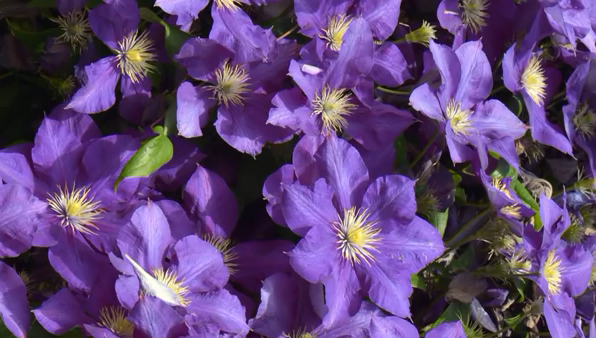
Pruning
Most vigorous or early flowering hybrids need very little pruning. In certain situations removing tangled growth is all that is required on C. armandii, C. montana, and C. tangutica species. Early summer, large flowering hybrids that flower on the previous years growth can quickly be pruned for shape when all is dormant. Late flowering hybrid varieties, blooming on the current year’s growth can be pruned back to a set of buds in the fall or winter.
About the Author:
Jonathan Aflatooni is the co-owner of Blacklotus Landscaping LLC, a residential and commercial maintenance and installation company. Jon has many years of practical experience in the field, from propagating his own collection of plant life to creating and designing new landscapes. He looks forward to sharing with a wider audience some of the insights and knowledge he has gleaned along the way.
how do I successfully propagate Clematis cuttings. I have tried several methods but so far no success at all?
Scott, they are tricky but usually done as softwood cuttings in the summer under mist, http://mikesbackyardnursery.com/mikes-plant-propagation-kit/
My 6 yr old clematis has never produced a bloom. I’ve cut it back hard, nearly up rooted it, and done nothing. It’s on a large pot. Nice yellow to green leaves. Any advice?
Marjie,
Have you tried a bloom booster fertilizer? That might do the trick. Regular fertilizer could keep it from blooming.
hello i live in England and have some youg clamitis plants growing in pots they have been thriving but all of a sudden one of them has signs of being eating. W have had a lot of rain but only one plant has chunks out of its leaves so i think its an insect could you tell me what is the best solution on how to treat? thank you bernadette
Bernadette,
In the U.S. we have available products made by Bayer that are systemic insect controls. I’d look for something along that line.
I’ve got a clematis and it is on a bell on a stand and it only had a couple of blooms on it this year. They don’t last long and were smaller than before.. I need to know what to do. to help it. Also, I have a crepe myrtle and it has gone up to the sky with just a few blooms at the very top. Do I need to cut it back and if so when do I do ? How much do I cut it back as well? Thank you so much for all the tips you have on your blog.
Sandra,
The clematis would be much happier in the ground where the roots can spread and find more nutrition. The Crepe Myrtle can and should be pruned. You can do some pruning now or heavy pruning in the fall. At the very least cut those top branches back so the tree fills in more.
I have a clematis that has brown leaves at the bottom, I cut it back to the ground is there anything I can put on the plants beside it? They are class 3
Thank You Natalie
Natalie,
At this point, in the dead of summer, I would not cut it back that hard. I’d wait and do that in late November when the plant is dormant.